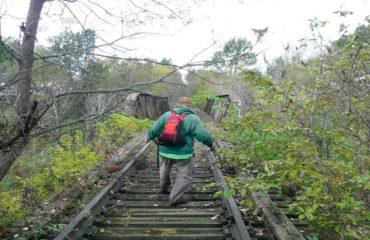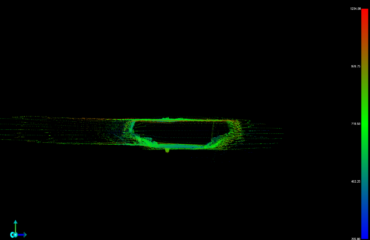SCI FYI: Mitchell Archaeological Site
In this issue of SCI FYI, we are sharing a synopsis of The Mitchell Site: An Upgrade, a paper presented by Don Booth at the 82ndAnnual Meeting of the Society for American Archaeology, Vancouver, Canada.

The Mitchell Archaeological Site is a pre-Columbian Mississippian (A.D. 1050-1350) mound center located at the western end of University Drive in Mitchell, Illinois. The site includes a platform mound and the remains of an entire village. While it once included 10 to 13 other mounds, those mounds were destroyed by modern activity. The site is affiliated with the Cahokia settlement system and was at one time, one of the largest sites in the system outside Cahokia itself.
In the spring of 2015, Cedar Creek Lumber, which owns most of what remains of the Mitchell site, initiated grading for the construction of two buildings with an associated new water line and sewer line as well as a detention pond.
The Illinois Historic Preservation Agency learned of this and halted the operation and asked Cedar Creek to hire a consultant to assess any damage to the site.
Let the Work Begin

SCI Engineering was contacted and asked to conduct the assessment. This inspection revealed that they had removed about 1.5 feet of the topsoil in the areas of their proposed buildings. This initial assessment was followed by a Phase One survey consisting of shovel testing and 1 x 1 m hand-excavated test units of the proposed water and sewer lines, and machine excavation within the proposed building footprints and the detention pond.
The machine excavations began by removing the top 7.5 cm to clean up the surface of Cedar Creek’s excavations. This initial cut revealed that the construction excavation had halted within fill material and had not penetrated deep enough to impact archaeological features.
The machine excavation continued until the tops of features were exposed at roughly 30.5 centimeters below the desired grade.
The construction plans called for the placement of 21 inches (53.3 cm) of clean soil over the grade elevation in the building footprints with 6 inches (15.2 cm) of rock over that covered with a 9 inch (22.9 cm) thick slab of concrete. Given that the features were located 1 foot (30.5 cm) below grade, it would mean that the features would be 48 inches (1.22 m) below the finished floor of the building.

Following an on-site consultation, the Illinois Historic Preservation Agency determined that preservation in place was the best option for the features. However, they requested that the entire footprint of Buildings 1 and 2 be stripped down to feature level and that all features be mapped and minimally sampled before reburial under the clean fill.
Exposure of the building footprints resulted in the identification of numerous superimposed structures. Eighty-one features were delineated within the two building footprints. Of interest, was the identification of six square structures averaging 10 X 10 meters and two T-shaped structures.
Cultural Significance
These cursory investigations provide an opportunity to begin to ask questions about the site’s organization and layout, to assess what remains of the site for future research, and gain insight into its occupational history.
Until last year, the only major investigations of the Mitchell Site occurred in the 1960s when Highway 270 was built. The process of building that highway ultimately destroyed all but two of the mounds.

The new site study, conducted last year by the SCI team, brings the investigation of this area into the 21st century. New discoveries show that the occupation of that site was much longer in duration than previously thought, now assessed to 300 to 400 years vs. the 50 years previously believed. SCI experts discovered and identified a new plaza for communal activities defined by a series of extremely large buildings that were later replaced by mounds.
The main result of the cultural services work performed by SCI’s Senior Archaeologist Don Booth and his team, was the creation of an overall GIS site map. This map not only shows the new findings, but combines SCI’s work with that of all previous investigations conducted at the site. The new map allows today’s and future scientists to re-assess this significant site and to gain insight into its history and role in the greater Cahokian world.





